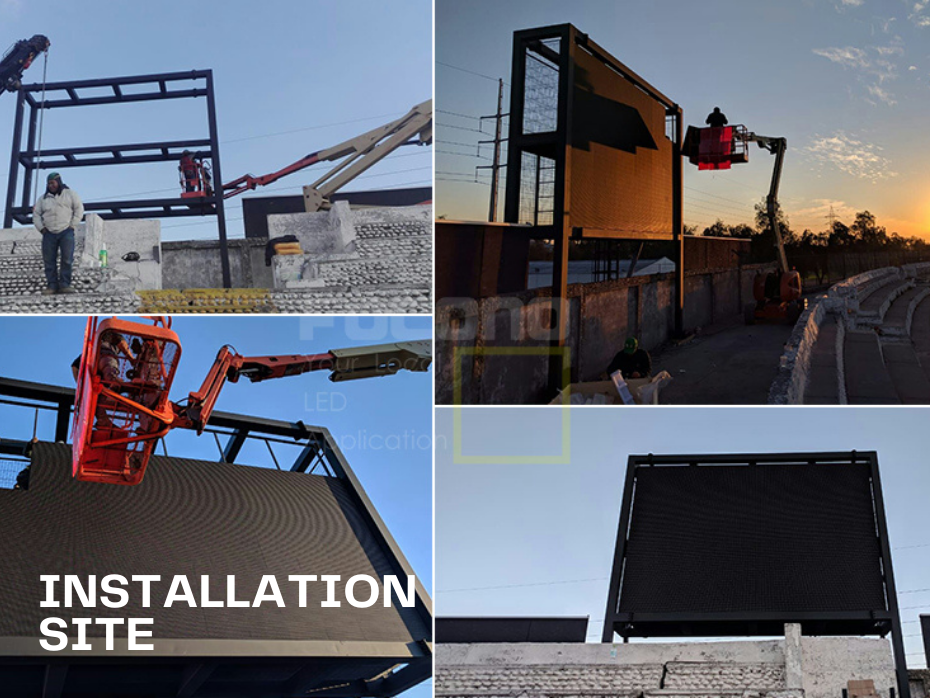Outdoor LED display screens are mainly used in outdoor environments, with the characteristics of high brightness, bright colors, energy saving and durability, strong waterproof performance and high ease of use. Its use scenarios are also very wide, mainly used in urban building curtain walls, sports events, stage backgrounds, advertising and information release.
Since the application scenarios of LED display screens are mainly in busy sections of the city or crowded shopping malls and event sites, safety is the most important consideration and attention. At the same time, due to the complex outdoor environment, LED screens must also meet the characteristics of waterproof, windproof, leakage-proof and drop-proof when used outdoors.

Therefore, from the perspective of usage scenarios, product attributes, environmental characteristics and safety, installing an outdoor LED display is a complex process that requires professional technology and equipment. The following are the general steps.
1. Determine the location: First, you need to determine the installation location of the LED screen. This location should have enough space to accommodate the screen and be the best position for the target audience to see it.
2. Design the structure: Design a suitable structure according to your own needs and budget, and it must be able to withstand wind, rain and other possible natural disasters. Outdoor LED screen installation generally adopts LED box structure, which is convenient for later scheduling, aging, on-site maintenance, and easy to pack and transport, making on-site installation and disassembly convenient.
3. Install the structure: Use appropriate tools and equipment to install the structure according to the design drawings. Make sure all connections are firm and the structure is stable.
4. Install the LED screen: Install the LED screen on the structure. Make sure the screen is flat and there is no obvious bend or twist.
5. Connect the power and signal cables: Connect the LED screen to the power and signal source. Make sure the power supply is safe and all connections are not at risk of looseness or short circuit.
6. Test: Turn on the LED screen and check if it is working properly. If there is any problem, solve it immediately.
7. Maintenance: Check the working status of the LED screen regularly, clean the dust and dirt on the screen, and ensure it is working properly.

There are many ways to install outdoor LED screens, including wall-mounted, column-mounted, suspended, embedded, floor-standing, supported, roof-mounted, and rental hanging. Each installation method has its specific application scenarios and technical requirements to ensure safety and stability and give full play to the display effect.

There are many ways to install outdoor LED screens, each with its own advantages. Choosing the right installation method is not only related to the stability and safety of the screen, but also directly affects its visual effect and the convenience of long-term maintenance. Therefore, in specific projects, the most appropriate installation method should be selected according to actual needs and environmental conditions, and operated in strict accordance with professional standards to ensure the best use effect and safety.





